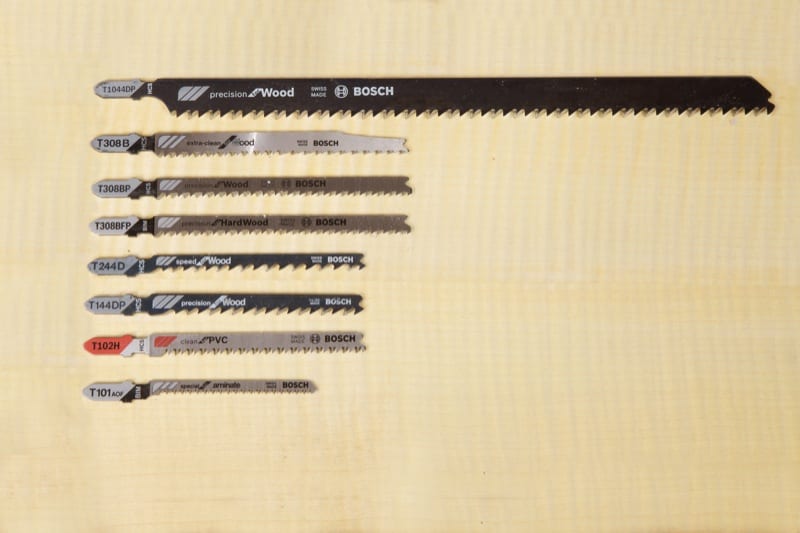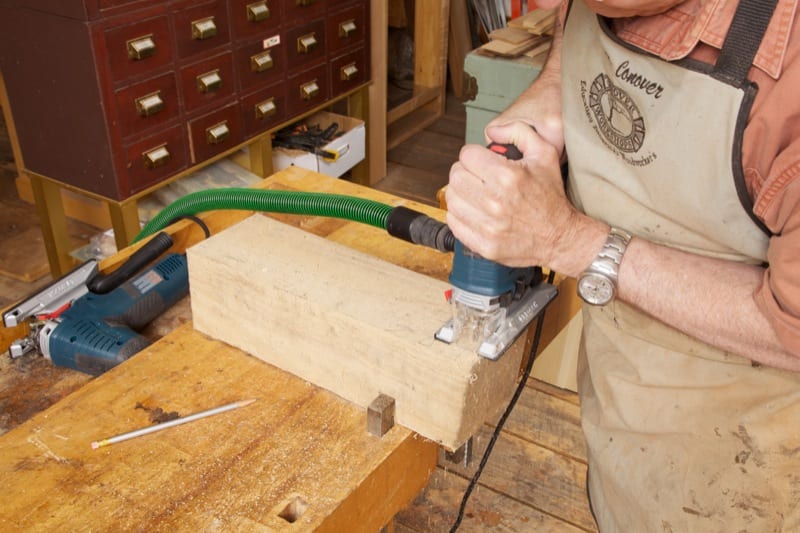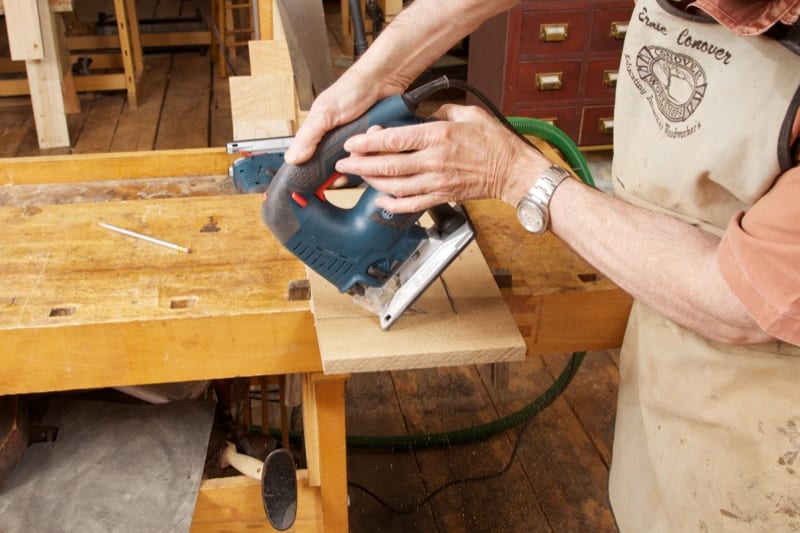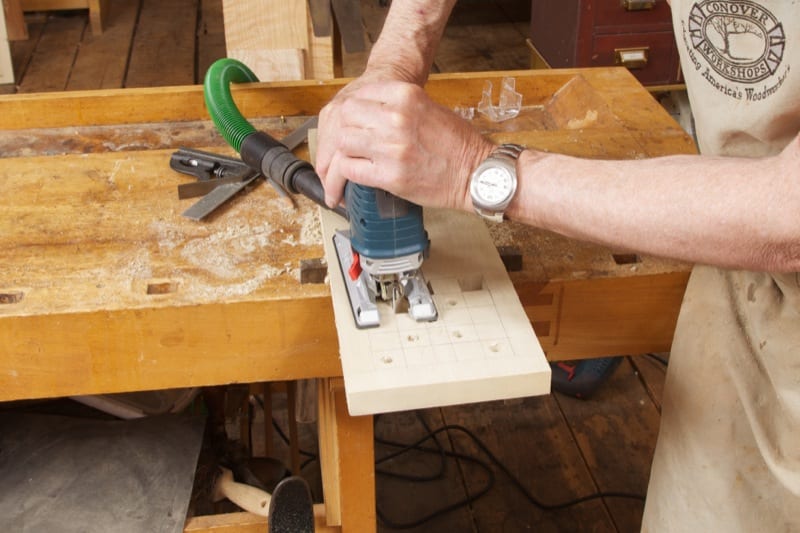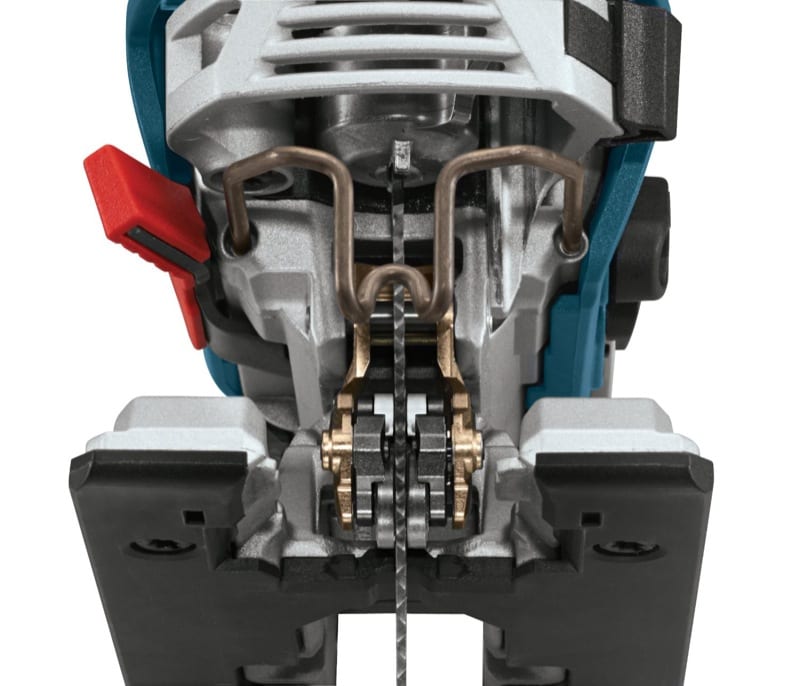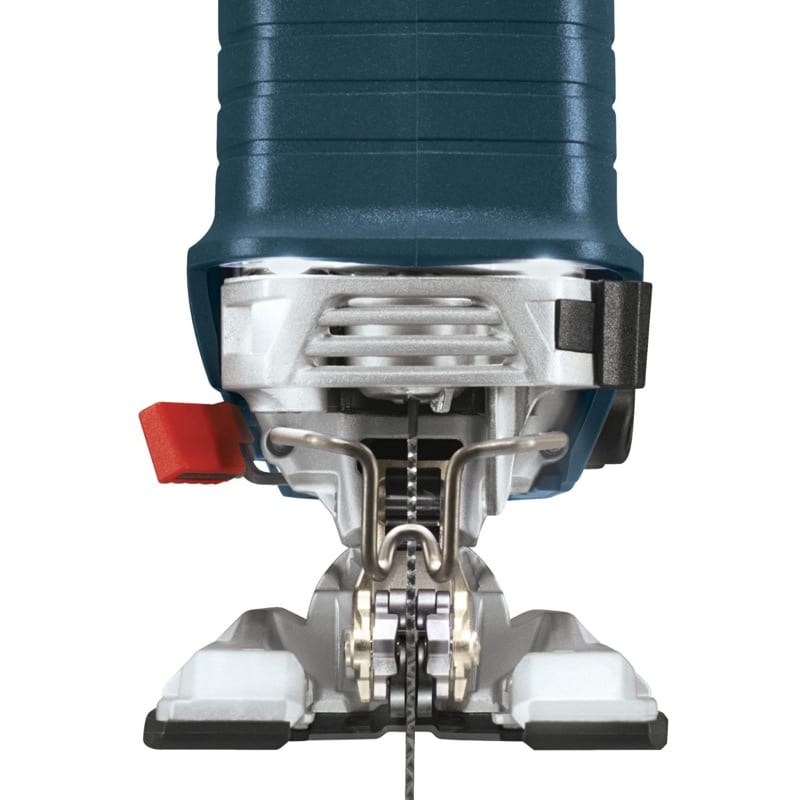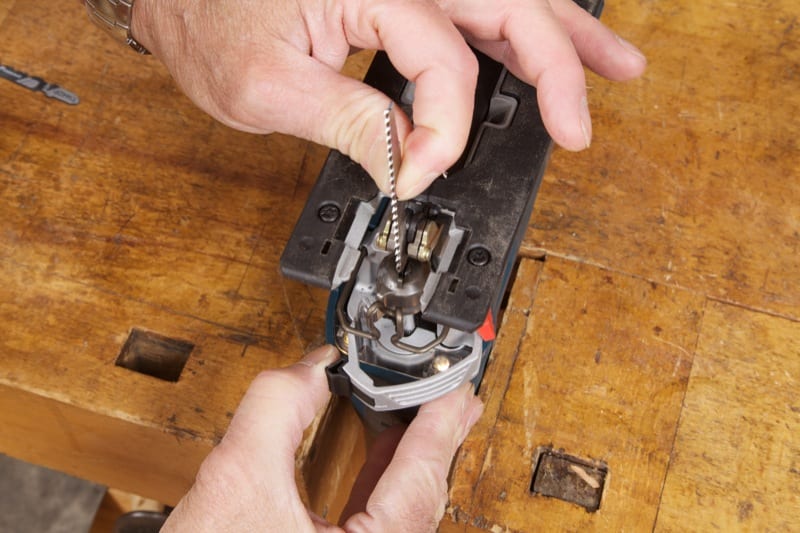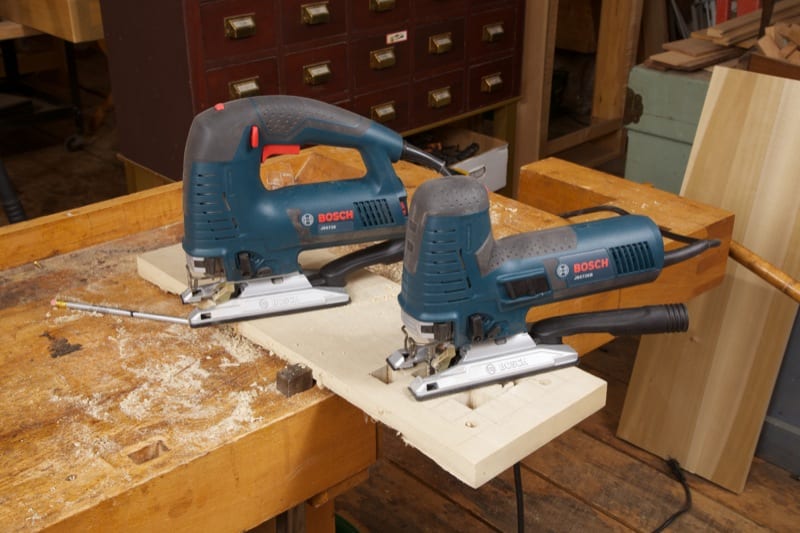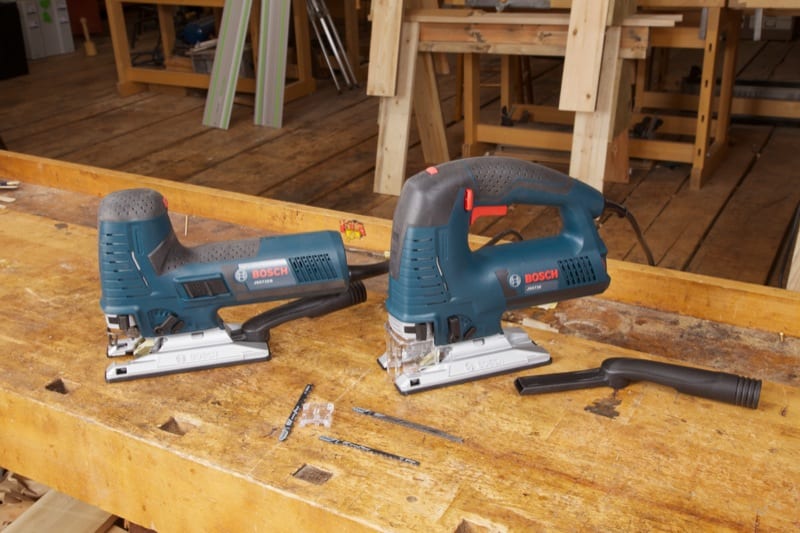This month I put Bosch’s relatively new Swiss-made jig saws through their paces. The Bosch JS572EK Handle Grip and Bosch JS572EBK Barrel Grip jigsaws were shown off to us at their annual media event. We wanted to get them in for a closer look ever since. Either saw is available as a standalone tool, or in an L-Boxx storage case at a street price of just under $250 and $300 respectively.
Editor’s Note: Check out our best cordless jigsaw reviews article for our top recommendations.
Background on the Development of Bosch Jigsaws
In 1946 Albert Kaufmann, who worked for the Scintilla AG Company in Solothurn, Switzerland invented the jigsaw by replacing the needle of his wife’s sewing machine with a saw blade. Bosch acquired Scintilla in 1954. Further Bosch innovations came in 1666 with the orbit (pendulum) action which drives the blade forward with each stroke, and in 1989 with the tool-less blade change. Bosch also invented both the double tang and the T shank. These two new tools only serve to increase Bosch’s jig saw bragging rights.
Bosch JS572EK vs JS572EBK
The two tools are essentially identical engines in two different housings. This brings up the decades-old argument of top handle versus barrel grip. The argument for barrel grip is that the lower profile gives better control and visibility of the blade. The detractors say that the design runs hotter, lacks variable speed, and does away with the quick start and stop that the top handle affords. A common wisdom found in discussion groups is that people with larger hands tend to prefer the barrel grip. Europeans also seem to chiefly prefer the barrel design while the top handle is more popular in England and the U.S. Cutting to the chase: the choice is yours.
The Whole Kit and Kaboodle
Both tools can be purchased as kits and will then come packaged in a Bosch L-Boxx, which looks strikingly similar to a Festool Systainer Box System, though it’s manufactured by a different company. Made from high-grade plastic, the L-Box is rugged and leaves a much smaller footprint than the average blow-molded plastic cases we have seen from power tool companies. The cases latch very nicely and snap together after you remove the four plastic shipping clips from the bottom. Storage for all of the accoutrements (including 10” blades) was well thought out. Great job Bosch—let’s see more L-Boxxed Tools!
Bosch JS572EK and JS572EBK Jigsaw Use and Features
Both saws worked superbly and were easy to use. I appreciated the ambidextrous nature of the Bosch JS572EK, which allowed you to use the trigger lock with either hand. Both jig saws had a tool-less blade eject system that worked well. Anyone who has suffered third-degree burns trying to manually remove a blade with their hands can relate to the importance of this feature.
Both tools allow you to easily square up the base in a way that is both intuitive and simple, and the blade is really well-lit thanks to dual LED lights that bathe the cutting area with light. Finally, the dust collection on both tools is something that I found to be beautifully executed. Connected to my shop vac, very little dust escaped as I was making my cuts.
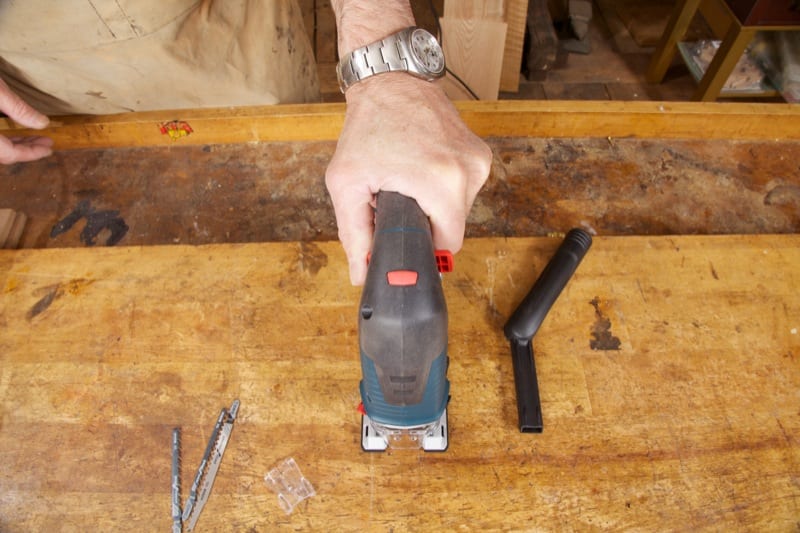
Tool-less blade change in both the Bosch JS572EK and JS572EBK was nothing short of superb. Simply pull out the lever and press the blade down. The last 1/16” is spring loaded so requires some downward pressure before releasing the lever. The spring spits the hot blade out of the tool when you raise the lever so that you do not burn your fingers. Two LED lights also lend nice visibility to layout lines during cutting.
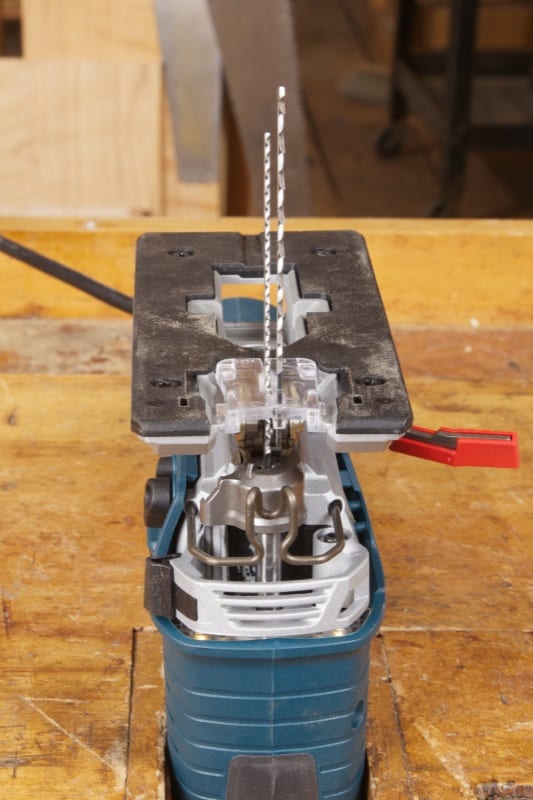
Squaring the base is simplicity itself and requires only a screwdriver. Insert a blade with the splinter guard in place. Now insert a second blade in a cutout in the guard and you can instantly adjust the base to be dead square. Adjustment is via a screw in the center of the base just behind the blade.
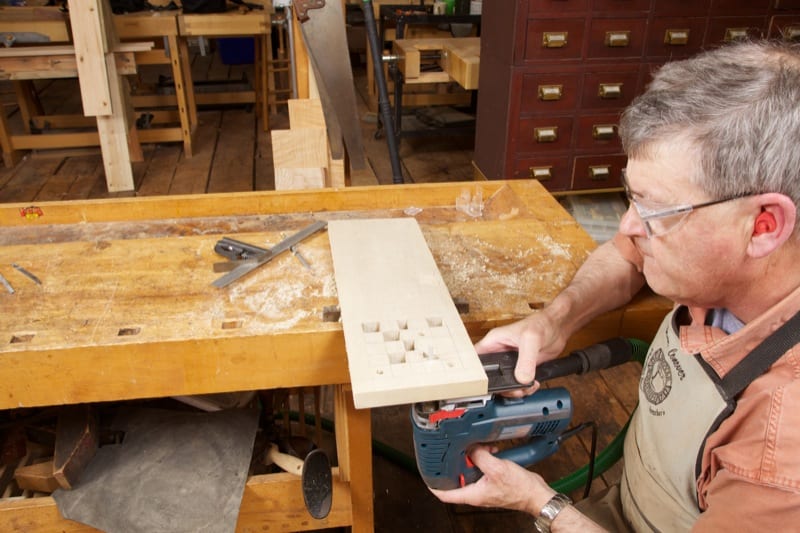
Bosch JS572EK and JS572EBK Jigsaw Cutting Flexibility
There is superb lighting around the JS572EBK blade thanks to two LED lights. Many wonder why there is a switch to turn the lights on and off. The reason is that most Europeans use the tool upside down because they can see the blade and follow layout lines better, and there is no tear out of the wood grain on the face. Although I am demonstrating with the Bosch JS572EK Top Grip, the JS572EBK Barrel Grip is much better for this scheme and is partially responsible for its popularity in Europe.
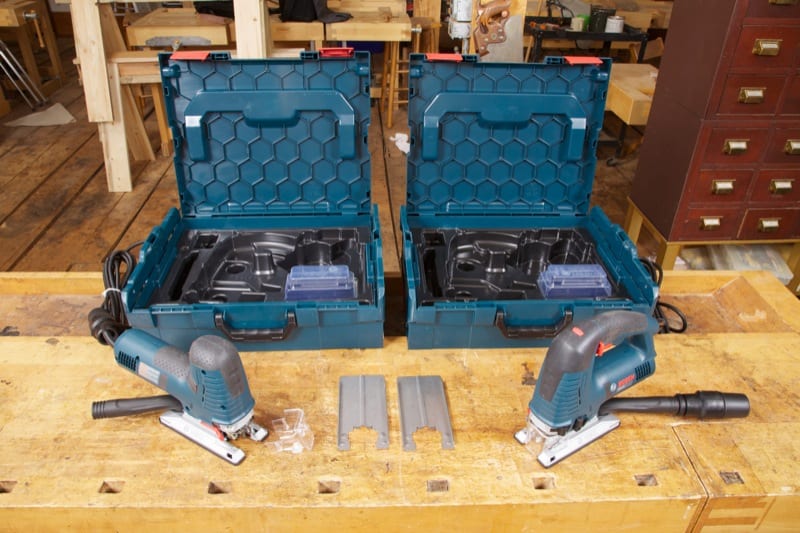
Both Bosch Jigsaws came with superb dust pick-up connections. An articulated plate snaps in from the rear of the tool. A tool-triggered vacuum can either be attached directly or with the supplied adaptor depending on the hose diameter. The user manual claims that the dust shroud must be in place for best results. I did not find that the shroud made much of a difference. With or without, a good amount of shavings end up on the floor, but all fine dust is sucked up. How much shavings end up on the floor is largely dependent on the blade being used.
Orbital Jigsaw Modes
Excluding “none”, there are three orbital (pendulum) action settings, which are selectable through a switch on the left side of either tool. I mostly used position II or III. You turn orbital action off for cutting metal, but even on more delicate cutting, I found the orbital action helpful with the proper blade. There are double rollers on the blade guide which stoutly support the blade as it cuts.
All About the Details
While the tools both have a die-cast aluminum footplate, both also come with a very nice plastic no-mar shoe that is perfect when working with delicate surfaces. For more rugged use there is also a steel “overshoe” that slides over the plastic base and snaps into place. A consumable splinter guard also snaps in place and reduces tear-out, especially in plywood. It only works at 90 degrees and does not work at all when the steel overshoe is installed. Base angle adjustments are tool-less. Simply raise the red lever on the right side and swivel the base to the desired angle.
It’s What’s on the Inside that Matters
Both the Bosch JS572EK and JS572EBK jigsaws are double insulated, draw 7.3 amps and have a soft start motor. Bosch uses something it calls Constant Response Circuitry that keeps speed constant with changing power needs, so if you start to run into a more difficult part of the cut, the motor responds with additional power to get you through. There is a dial that regulates speed from 800 to 2800 strokes per minute in 6 increments. With the top handle model, speed is further regulated with a variable speed trigger. I really appreciated the better-than-13-foot-long SJ-style power cord because I can use this tool anywhere in my shop without an extension cord. The instruction manual was also very clear and easy to read, and I rate it an 8 out of 10.
